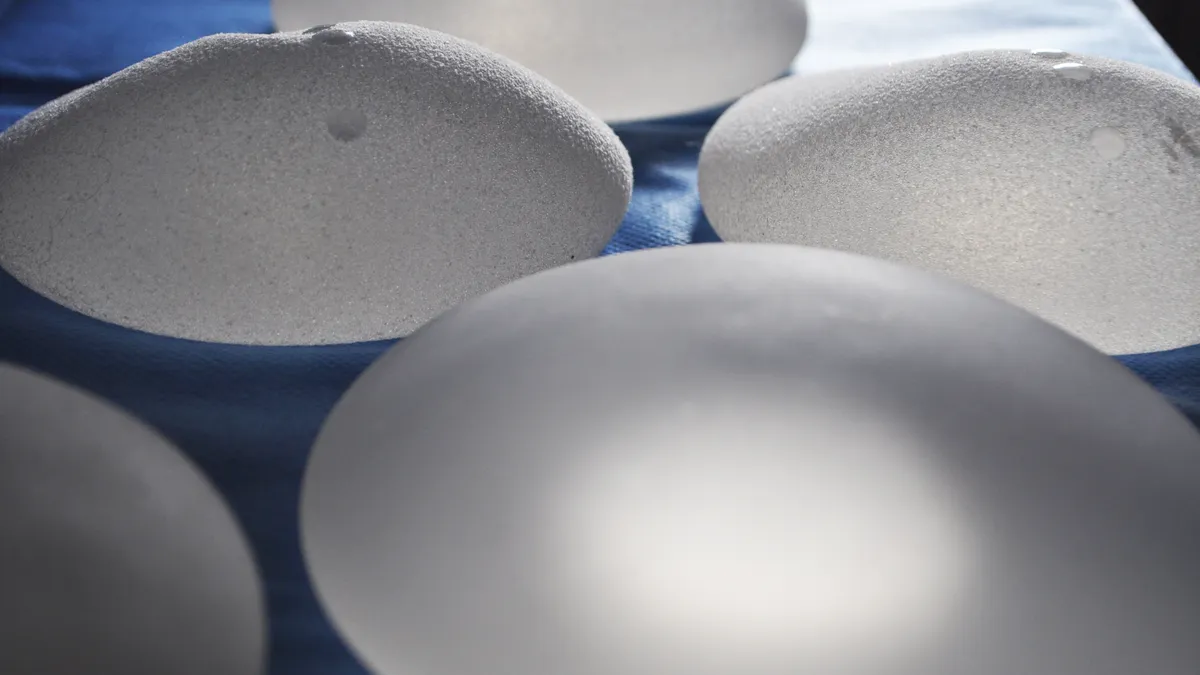Dive Brief:
- Australian regulators opted not to ban any breast implant devices this week after calling a meeting of its expert working group on breast implant associated anaplastic large cell lymphoma (BIA-ALCL), which the Therapeutic Goods Administration (TGA) said it convened to "inform decision making" in response to similar reviews by regulatory bodies in the U.S., France and Canada.
- An update Tuesday from TGA said the group found gaps in Australian data when considering BIA-ALCL rates and correlation with implant types, making it difficult to assess the true incidence of the lymphoma across varying degrees of texture.
- TGA said it wrote Tuesday to all Australian suppliers of breast implants formally requesting information on when they began selling certain implant models in Australia and how many devices have been supplied since, giving Allergan, Mentor and other manufacturers 10 working days to comply before TGA plans to reconsider whether to suspend or cancel any particular products from the Australian market.
Dive Insight:
The conclusion that there was too little information to ban any particular product or class of products arguably slows some regulatory momentum that started in France and continued in Canada last week.
French authorities banned all macro-textured and polyurethane-coated implants, while Health Canada moved to suspend Allergan's marketing license for its Biocell textured implants if the company did not produce satisfactory safety evidence within 15 days.
U.S. regulators are taking a more cautious approach, with FDA saying it intends to communicate in the coming weeks what actions it plans to take "in light of the panel meeting and current state of the evidence."
The FDA held a two-day, non-voting advisory meeting on breast implant safety in late March, during which recipients of breast augmentation or reconstruction called for a U.S. ban on textured implants but where expert advisers came to no consensus on next steps.
As of early this week, TGA said it had received 76 reports of Australian women with BIA-ALCL. That compares to 28 cases confirmed in Canada, 59 officially cited by French regulators and 457 unique reports submitted in the U.S. In its update, TGA noted its deferred decision making protocol mirrors the approach taken by regulators in the U.S., U.K. and Germany. That tempered decision on implants also comes in the week after the body put out a three-pronged action plan on medical device safety in Australia.
TGA said that textured implants of varying roughness are still used in 82% of operations in Australia. The regulator formed the working group of surgeons, cancer epidemiologists, data analysts and consumers in 2016, five years after it began tracking BIA-ALCL and seven years after it received the first report of an Australian case of the disease.
TGA said the working group also backed increased use of the Australian Breast Device Registry (ABDR), particularly for recording details of removal of implants and of BIA-ALCL case. ABDR was first piloted in 2011 before rolling out as a nationwide opt-out registry.
Though it has been around longer than the U.S.'s National Breast Implant Registry launched in 2018, Ingrid Hopper, who leads the Australian registry, noted in an interview with MedTech Dive that the registry data is not an "immediate solution" because the datasets available still have yet to mature.











